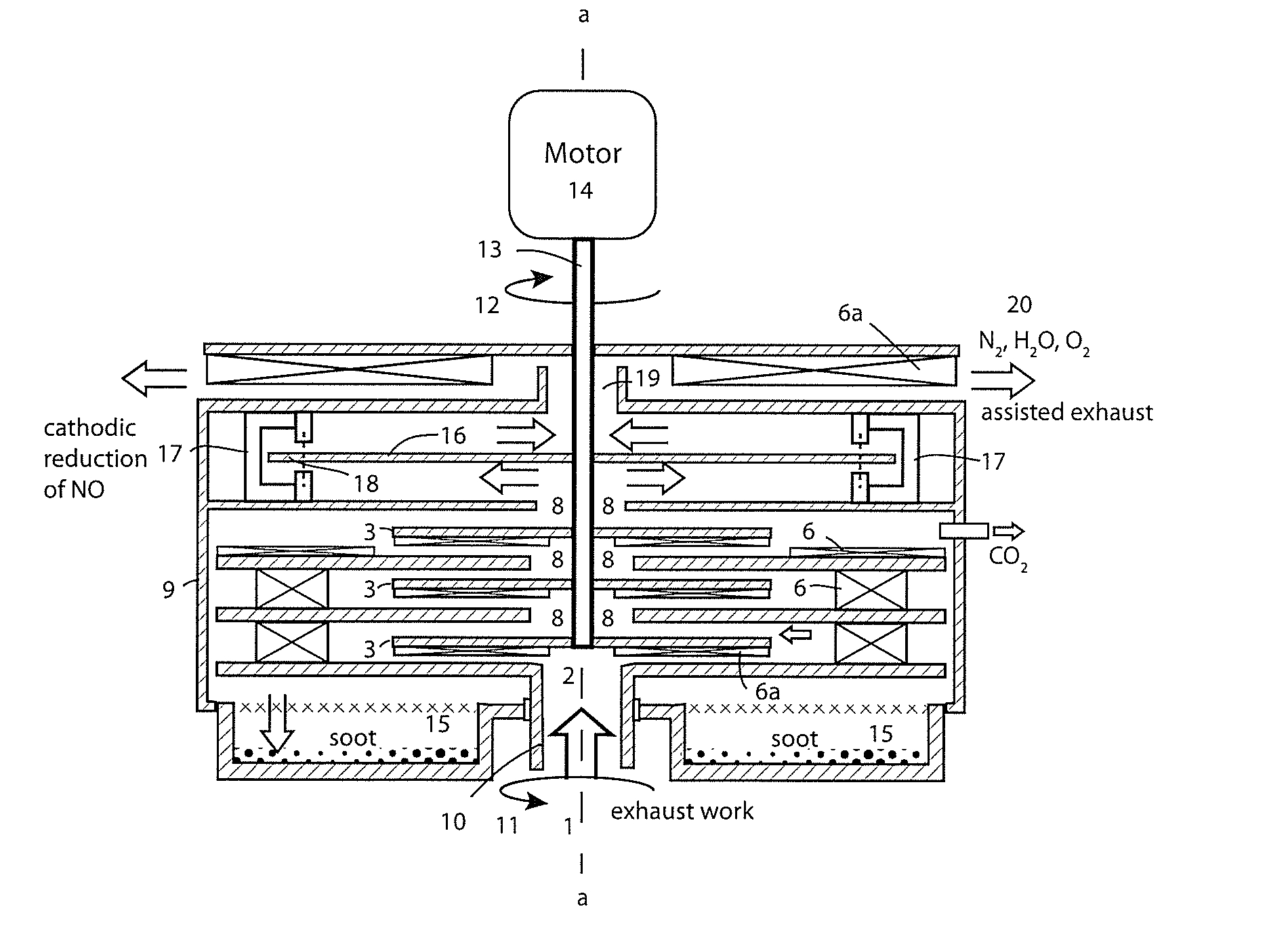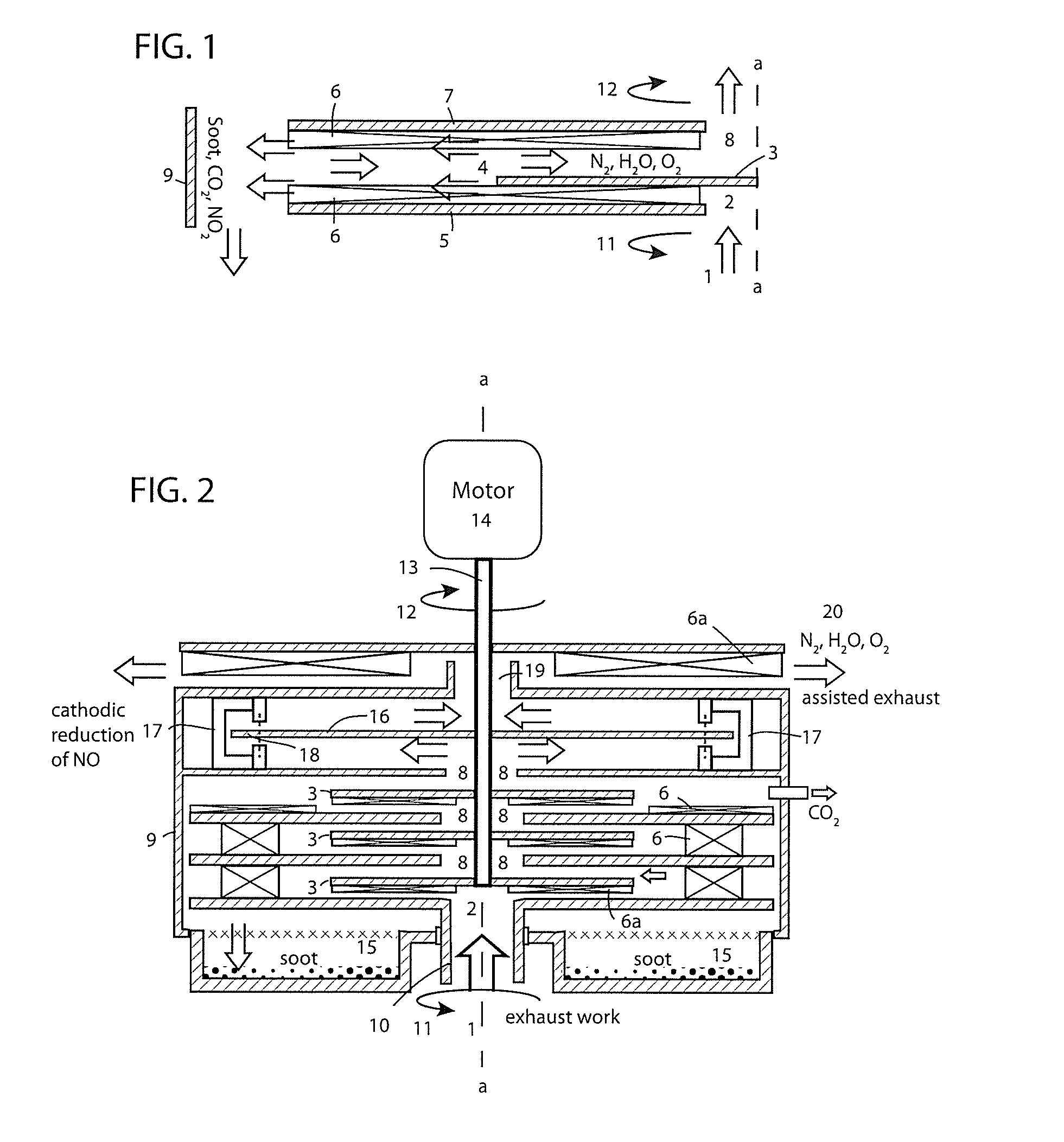Radial counterflow muffler for no reduction and pollutant collection
a muffler and pollutant technology, applied in the field of mufflers, can solve the problems of increasing the heat and wear of the engine, reducing the fuel efficiency, and increasing the fuel requirements, and achieve the effect of effectively separateing pollutants
- Summary
- Abstract
- Description
- Claims
- Application Information
AI Technical Summary
Benefits of technology
Problems solved by technology
Method used
Image
Examples
Embodiment Construction
[0131]FIG. 1 shows a cross section of the left half of a single pair of counter-rotating radial turbines in the first stage of a cascade. An exhaust gas input stream 1 from an internal combustion engine enters through an axial feed port 2 which is at the center of a lower radial turbine 5. The input stream is partially blocked by a baffle 3, disposed between the axial feed port 2 at the center of the lower radial turbine 5 and an axial extraction port 8 at the center of the upper radial turbine 7. The vanes 6 on the disks can be radial turbine vanes that are actuated by a radially outward flow from the axis of rotation a-a through the workspace 4 between the radial turbines, or they may advect the outward flow when the disk is turned by suitable means, such as a motor. The term radial turbine herein refers to the combination of the disk and one or more vanes, whether the turbine advects or is advected by the flow through the workspace 4.
[0132]Each of the disks 5, 7 comprises an arra...
PUM
| Property | Measurement | Unit |
|---|---|---|
| Flow rate | aaaaa | aaaaa |
| Magnetic field | aaaaa | aaaaa |
| Acoustic properties | aaaaa | aaaaa |
Abstract
Description
Claims
Application Information
 Login to View More
Login to View More - R&D
- Intellectual Property
- Life Sciences
- Materials
- Tech Scout
- Unparalleled Data Quality
- Higher Quality Content
- 60% Fewer Hallucinations
Browse by: Latest US Patents, China's latest patents, Technical Efficacy Thesaurus, Application Domain, Technology Topic, Popular Technical Reports.
© 2025 PatSnap. All rights reserved.Legal|Privacy policy|Modern Slavery Act Transparency Statement|Sitemap|About US| Contact US: help@patsnap.com



